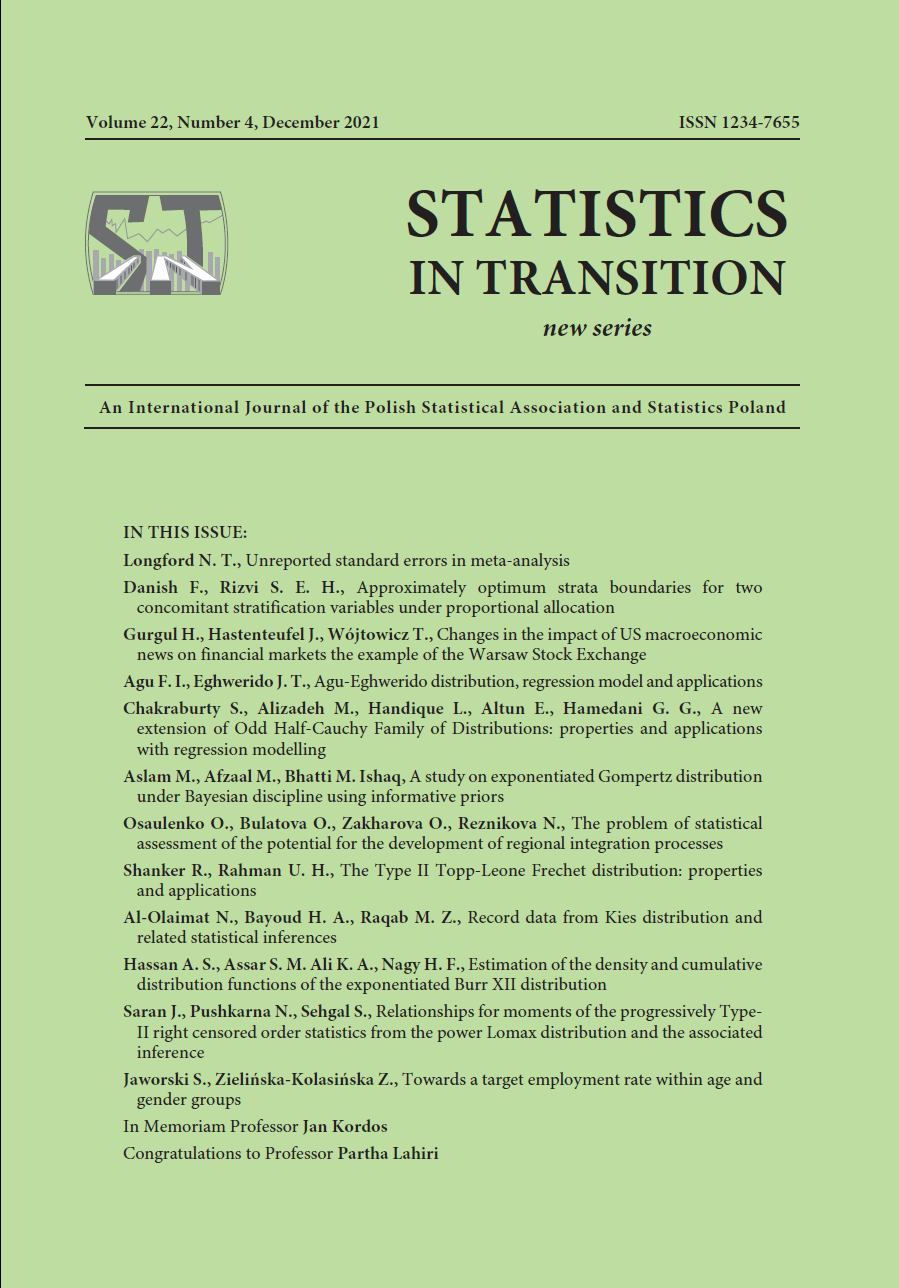ARTICLE
ABSTRACT
A study that would otherwise be eligible is commonly excluded from a meta-analysis when the standard error of its treatment-effect estimator, or the estimate of the variance of the outcomes, is not reported and cannot be recovered from the available information. This is wasteful when the estimate of the treatment effect is reported. We assess the loss of information caused by this practice and explore methods of imputation for the missing variance. The methods are illustrated on two sets of examples, one constructed specifically for illustration and another based on a published systematic review.
KEYWORDS
empirical Bayes, imputation, meta-analysis, missing value, sensitivity analysis
REFERENCES
Begg, C., Cho, M., Eastwood, S., Horton, R., Moher, D., Olkin, I., Pitkin, R., Rennie, D., Schulz, K.F., Simel, D., and Stroup, D.F., (1996). Improving the quality of reporting of randomized controlled trials. The CONSORT statement. Journal of the American Medical Association, 276, pp. 637–639.
DerSimonian, R., and Laird, N., (1986). Meta-analysis in clinical trials. Controlled Clinical Trials, 7, pp. 177–188.
Duval, S.J., and Tweedie, R.J., (2000). Trim and fill: A simple funnel-plot-based method of testing and adjusting for publication bias in meta-analysis. Biometrics, 56, pp. 455– 463.
Gamble, C., and Hollis, S., (2005). Uncertainty method improved on best-worst case analysis in a binary meta-analysis. Journal of Clinical Epidemiology, 58, pp. 579–588.
Glass G.V., (1976). Primary, secondary, and meta-analysis of research. Educational Researcher, 5, pp. 3–8.
Haidich, A.B., (2010). Meta-analysis in medical research. Hippokratia, 14, pp. 29–37.
Hamilton, M., (1967). Development of a rating scale for primary depressive illness. British Journal of Social and Clinical Psychology, 6, pp. 278–296.
Hedges L.V., and Olkin I., (1985). Statistical Methods for Meta-Analysis. Boston, MA: Academic Press.
Lin, L., and Chu, H., (2018). Quantifying publication bias in metaanalysis. Biometrics, 74, pp. 785–794.
Longford, N.T., (2010). Small-sample inference about variance and its transformations. SORT, Journal of the Catalan Institute of Statistics, 34, pp. 3–29.
Longford, N.T., (2015). On the inefficiency of the restricted maximum likelihood. Statistica Neerlandica, 69, pp. 171–196.
Mavridis, D., White, I.R., Higgins, J.P.T., Cipriani, A., and Salanti, G., (2014). Allowing for uncertainty due to missing continuous outcome data in pairwise and network meta-analysis. Statistics in Medicine, 34, pp. 721–741.
Rice, K., Higgins, J.P.T., and Lumley, T., (2018). A re-evaluation of fixed effect(s) metaanalysis. Journal of the Royal Statistical Society Series A, 181, pp. 205–227.
Rothstein, H.R., Sutton, A.J., and Borenstein, M., (2005). Publication Bias in Meta- Analysis. Prevention, Assessment and Adjustments. Wiley and Sons, Chichester, UK.
Rubin, D.B., (2004). Multiple Imputation for Nonresponse in Surveys. 2nd ed. New York, NY: Wiley.
von Elm, E., Altman, D.G., Egger, M., Pocock, S.J., Gotzsche, P.C., and Vanderbroucke, J.P., (2008). STROBE Initiative. The strengthening of reporting of observational studies in epidemiology (STROBE) statement: guidelines for reporting observational studies. Journal of Clinical Epidemiology, 61, pp. 344–349.
